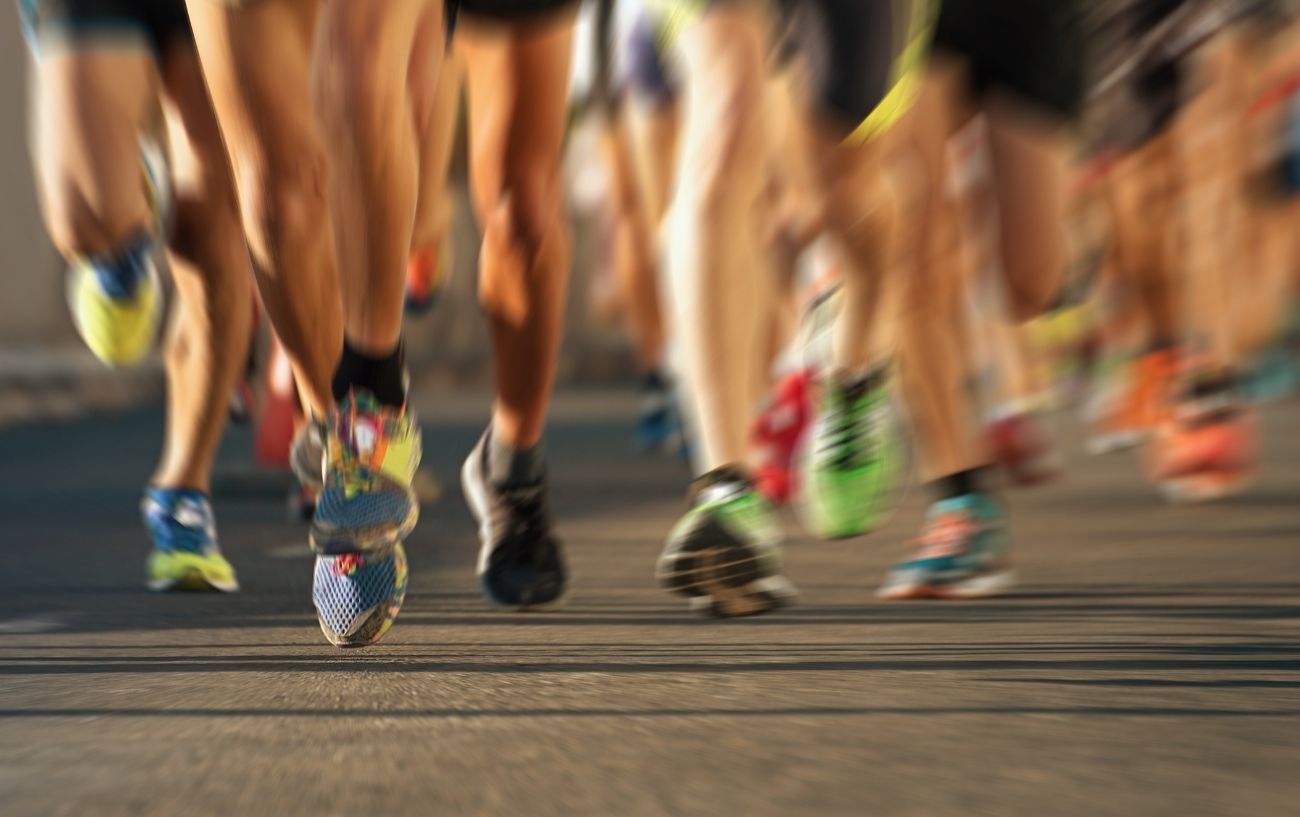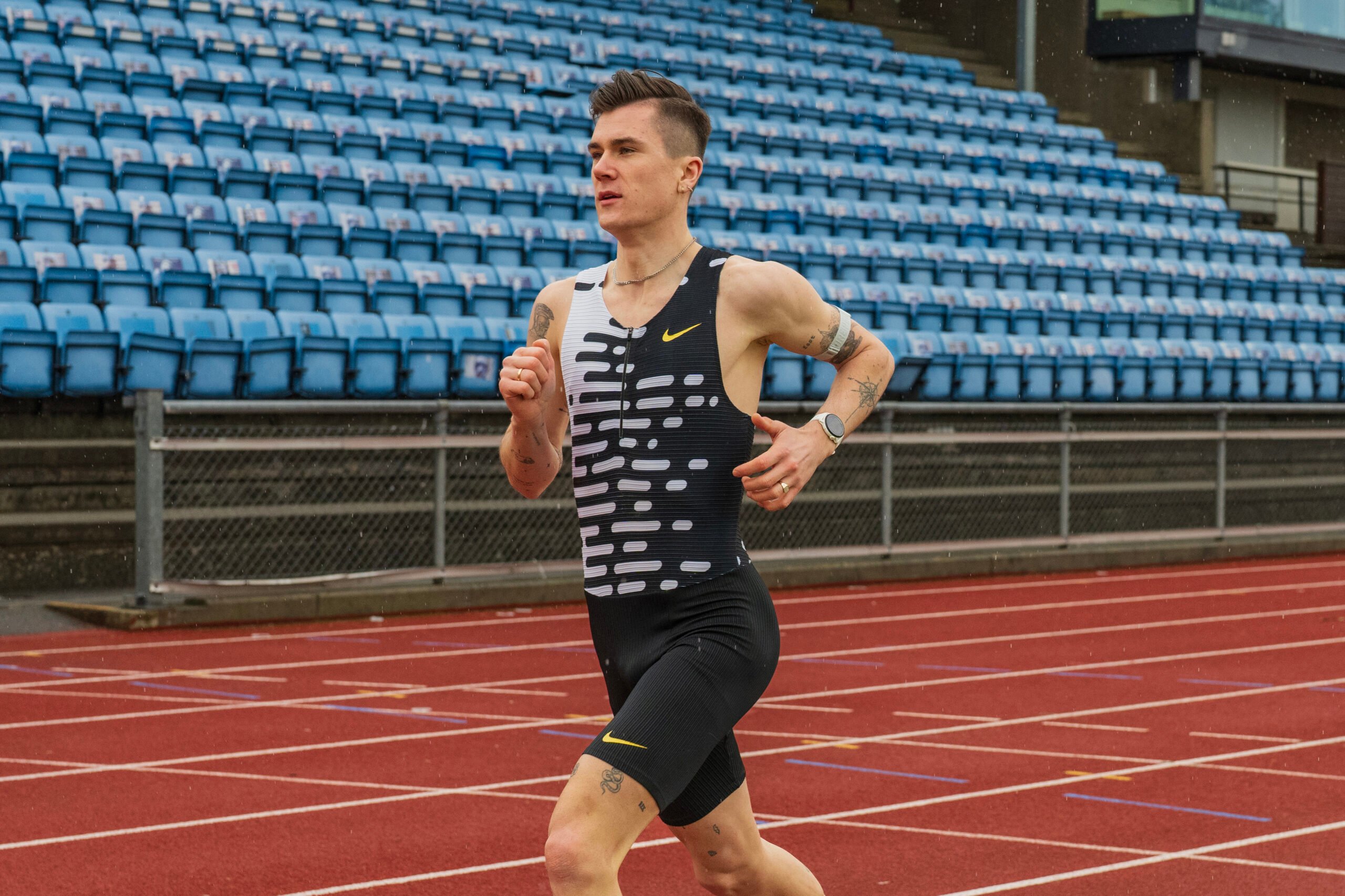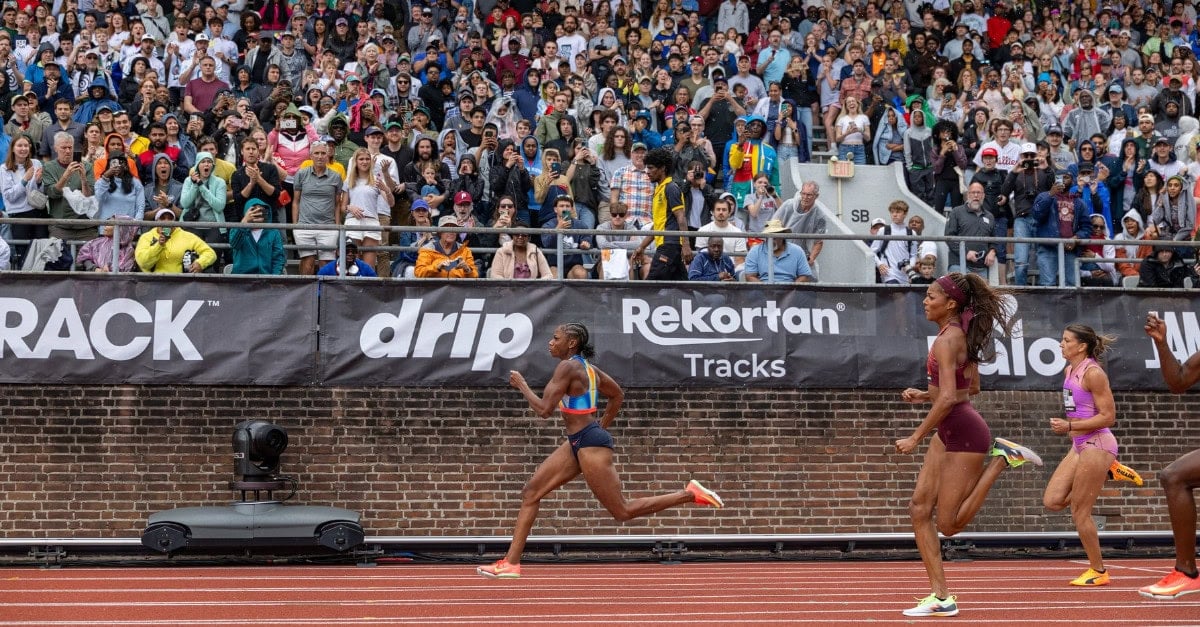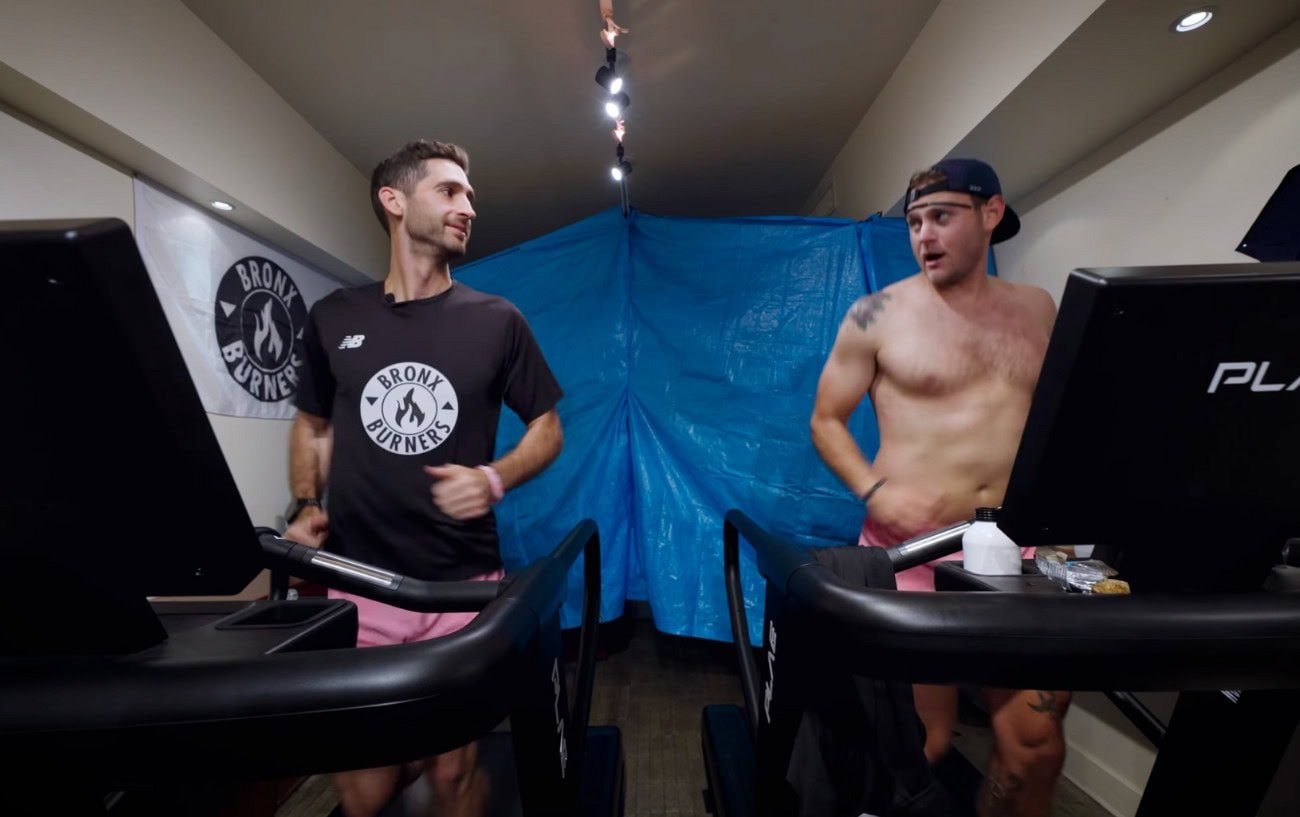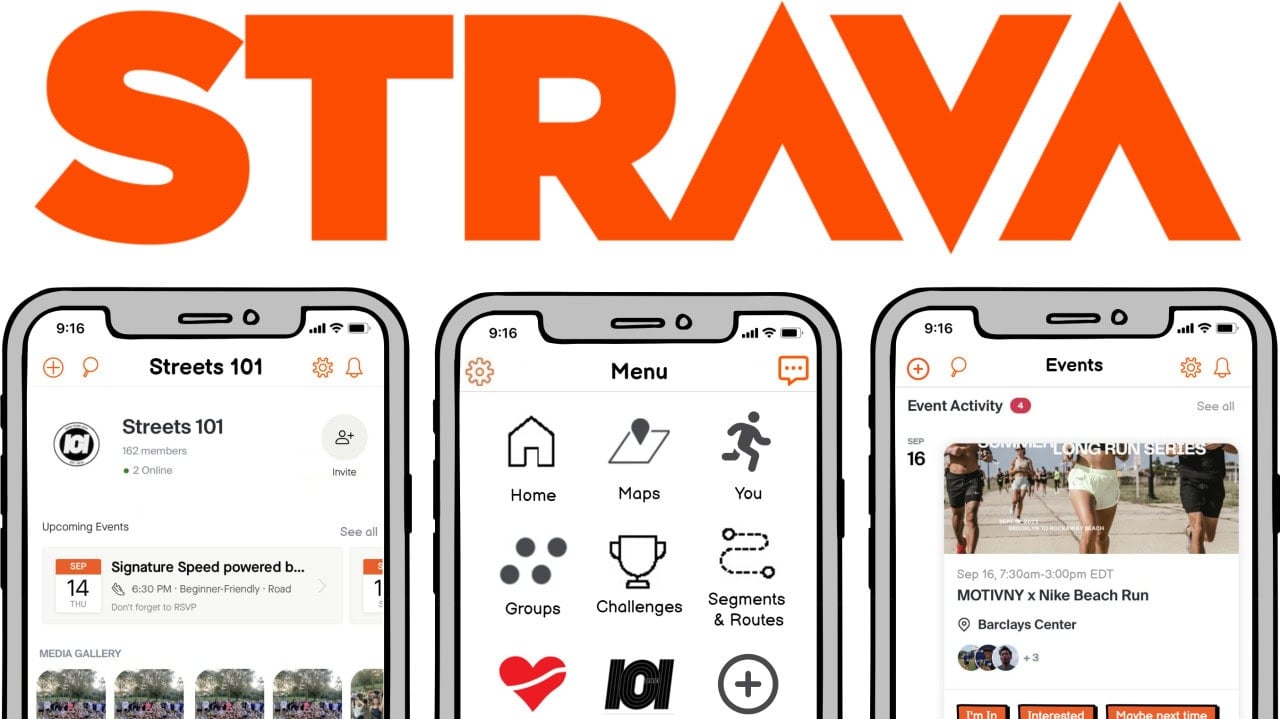Whenever you start a new sport, activity, or hobby, there’s some unfamiliar lingo you have to learn, and running is no exception.
Running terminology spans the gamut from terms that describe specific types of workouts, like threshold intervals and VO2 max, to the lingo that runners use to describe feelings associated with being a runner, sometimes in a tongue-in-cheek manner, such as acronyms like DNF and terms like bonking.
There is such a rich vocabulary of common running terminology that a glossary of running terms could easily span several pages.
This guide is essentially a mini running glossary, highlighting some of the most important running terms every runner should know.
Let us transport you back to the days of learning new vocabulary words in grammar school with our list of 70 running terms all runners should know.
Also, each term is linked to a full article on that particular topic. So if you want a deep dive on any or all of the terms, go for it!

Essential Running Terms Every Runner Should Know
#1: Aerobic Threshold (AT)
The effort level you can sustain for hours while breathing easily, just before lactate levels start to rise. Training at or below AT builds endurance, letting you run longer and maintain higher intensities without fatigue.
#2: Anaerobic Threshold (Lactate Threshold)
The point where lactate accumulates faster than your body can clear it, causing fatigue to set in. Training near this threshold improves your ability to sustain fast paces for longer before slowing down.
#3: Aqua jogging
Also called pool running or deep water running, aqua running is a popular type of cross-training for runners that involves running against water resistance in the pool’s deep end (or natural body of water), where your feet can’t touch the bottom.
A flotation belt is typically used, although not always.
#4: Base Mileage
Base mileage is the average number of miles (or kilometers) you run weekly before beginning a specific training plan or starting to incorporate speed workouts into your schedule.
#5: Body Glide
This is a case where the brand name of a product has come to serve as a substitute for the generic item, much like Kleenex for facial tissues.
Body glide, or lube, is a stick of anti-chafing skin-protectant lubricant that you apply to areas of your skin prone to chafing or blisters, such as nipples, inner thighs, underarms, and toes.

#6: Bonk
Another word for “hitting the wall,” used in endurance sports to describe a sudden, dramatic drop in energy due to glycogen depletion.
#7: Cadence
Cadence refers to the number of steps you take per minute as you run
An ideal running cadence is typically around 170-180 steps per minute, but this is often up for debate in the running world.
Running cadence is also referred to as turnover or step rate.
#8: Carb-Loading
A nutrition strategy involving increased carbohydrate intake in the days leading up to a long-distance race to maximize glycogen stores.
#9: Cool Down
A cool-down refers to the easy recovery portion at the end of your workout.
The cool-down helps gently guide your heart rate back to resting levels and flush out metabolic byproducts in your muscles from high-intensity exercise.
#10: Cross-Training
Cross-training is any type of exercise other than running that you add to your training plan.
It is a good way to reduce the risk of injury while improving fitness because it uses different muscles and motions than running and is often lower impact.
Cross-training exercises for runners include cycling, swimming, aqua jogging, yoga, and strength training.

#11: Dreadmill
This is a cheeky running term for the treadmill that is said to encapsulate the love-hate relationship of this exercise machine. Most runners would rather run outside than run inside on the treadmill.
#12: Electrolytes
Minerals like sodium, potassium, and magnesium that help regulate hydration, muscle function, and nerve signaling during exercise.
#13: Form
Your running form refers to the dynamic posture of your body as it moves when you run.
The proper running form includes an upright posture, neutral head and spine, a very slight forward lean of the trunk, an engaged core, arms swinging back and forth with a 90-degree angle in the elbows, a midfoot strike, and an even stride length.
#14: Fartlek
You might have a giggle the first time you hear this running term, but Fartlek is a Swedish word for “speed play.”
A Fartlek workout involves varying your pace as you run by interspersing bursts of fast running without stopping after each “on” interval.
For example, you might do a 5-mile Fartlek run with 10 x 90-second surges at a 5K pace. Between each of these surges, you would resume your normal training pace.

#15: Foot Strike
Foot strike refers to the area of your foot that first contacts the ground while running.
With heel striking, the rearfoot or heel is the location of the foot that makes initial contact with the ground.
With midfoot striking, you land on the center of your foot, while forefoot striking involves landing on the ball of your foot.
#16: Gait Analysis
An assessment of your running mechanics, often done at a specialty running store or by a coach, to help you choose the right shoes and improve form.
#17: Gels
Gels, also known as energy gels, are viscous, carbohydrate-rich sports nutrition products runners use to fuel themselves during long runs and endurance races. They replenish glycogen stores and prevent “bonking.”
#18: Glycogen
The storage form of carbohydrates1Adeva-Andany, M. M., González-Lucán, M., Donapetry-García, C., Fernández-Fernández, C., & Ameneiros-Rodríguez, E. (2016). Glycogen Metabolism in Humans. BBA Clinical, 5(5), 85–100. https://doi.org/10.1016/j.bbacli.2016.02.001 in the body. Muscle and liver glycogen are the primary fuel sources during vigorous running.
#19: Ground Contact Time (GCT)
The amount of time your foot spends on the ground during each step—shorter times are often linked to more efficient running.

#20: Heart Rate Variability (HRV)
The variation in time between heartbeats, often used to gauge recovery and readiness to train—higher variability generally indicates better recovery.
#21: Hill Repeats
A workout where you repeatedly run uphill at a hard effort and jog or walk downhill to recover. Used to build strength, power, and running economy.
#22: Hitting the Wall
Another running term for “bonking”; both words are running lingo for suddenly running out of energy during a race or workout.
Bonking or hitting the wall typically occurs due to total glycogen depletion (as in the last few miles in a marathon if you didn’t fuel properly) or going out in a race way too fast.
#23: Junk Miles
Some runners consider miles you run that don’t serve a specific purpose other than adding to your overall training volume to be “junk miles.”
Many running coaches advocate deliberate training rather than accumulating mileage for its own sake.
#24: Lactate Threshold (LT)
The intensity at which lactate starts building in your blood faster than your body can clear it. Training near LT can help you run faster for longer.
#25: Long Run
A sustained run at an easy-to-moderate pace, typically longer than your daily training runs, designed to build endurance and aerobic capacity.
#26: Marathon
A long-distance race that’s 26.2 miles or 42.195 km long.
#27: Max Heart Rate (MHR)
The highest number of times your heart can beat per minute during intense exercise. Used to help set training zones for workouts.
#28: Out-and-Back Route
An out-and-back route takes you from your starting point along a course to a turnaround point, which marks the halfway point of your run.

#29: Overtraining
Overtraining syndrome occurs when your training exceeds the capacity of your body to recover.
Your training volume or intensity can cause too much stress on your body, especially in the context of the rest of your life’s stressors.
Symptoms can include physical and mental manifestations, such as sluggishness, low energy, appetite changes, hormonal imbalances, difficulty sleeping, irritability or other mood changes, compromised immunity, and reduced athletic performance.
#30: Pace
Your pace refers to how fast you are running, usually in terms of how long it would take you to run a mile or a kilometer at the speed you are running.
For example, if you run at a 9-minute pace, you cover one mile every 9 minutes.
#31: Pacer
A runner who helps others maintain a steady pace during a race, often to hit a specific finish time.
#32: Plyometrics
Explosive, jump-based exercises (like box jumps or bounds) that build power, speed, and strength for running.
#33: Rate of Perceived Exertion (RPE)
A subjective scale (often 1–10) used to measure how hard a workout feels, factoring in effort, breathing, and fatigue.
#34: Recovery Run
A recovery run is a relaxed, easy run performed at a conversational pace or about 60 to 75% of your maximum heart rate.
#35: Resting Heart Rate (RHR)
The number of times your heart beats per minute when you’re at rest. A lower RHR often indicates better cardiovascular fitness.

#36: Runner’s High
This term describes a state of euphoria, often attributed to the release of endorphins brought about by running.
#37: Shakeout Run
A short, easy run, often done the day before a race or as a second run of the day, to loosen the legs.
#38: Splits
The time it takes you to run a specific sub-distance of the distance you are running.
For example, if you are running a marathon, you might track your mile splits. If you are running 1,000 meters on the track, you might pay attention to your 200-meter splits.
Your splits help you keep track of your pacing.
Even Splits
Running the same pace for each split.
Negative Splits
Running the second half of your race faster than the first half or ending faster than you started.

#39: Speedwork
Speedwork is a running term encompassing workouts involving running faster than your standard training pace.
Examples include interval training on a track, hill repeats, threshold runs, and fartleks.
#40: Strava
A popular GPS-based social media platform for runners and cyclists to track and share workouts, analyze performance, and compete on segments.
#41: Streaker
Although this term sounds like someone who runs naked, it refers to a runner who has run every day without a day off for an extended period of time.
You might hear of someone maintaining a “running streak.”
#42: Strength Training
Strength training, also known as resistance training or weight training, involves performing specific exercises under some kind of load or resistance to build muscle.
Strength training exercises include squats, lunges, push-ups, and planks. They can reduce runners’ risk of injury.

#43: Strides
Strides are bursts of fast running or sprinting, usually 50-100 meters long, that might be performed before a race or workout to get your neuromuscular system firing and ready to run fast.
Strides are often run as accelerations and are a great way to improve your form and increase your cadence or turnover.
#44: Surge
This refers to when a runner increases their speed or picks up their pace for a short period during a run or race. A “kick” would refer to a strong finish.
#45: Taper
A taper is a reduction in training volume (mileage) and intensity leading up to a race (usually the final week or so).
The taper allows your body to rest and recover a bit before the hard effort of race day, enabling you to feel fresh and have more energy, fewer physical aches, and less fatigue.
#46: Technical Terrain
In trail running, it refers to rocky, rooty, uneven ground that requires careful foot placement and balance.

#47: Threshold Run
Threshold runs involve running at a “comfortably hard“ pace (around 80-85% of your max heart rate) for a sustained 20 minutes or more.
These runs improve your running economy and lactate threshold.
#48: Ultramarathon (Ultra)
Any race longer than the standard marathon distance of 26.2 miles (42.195 km). Standard ultra distances include 50K, 50 miles, 100K, and 100 miles.
#49: Vertical Oscillation (VO)
The amount your body bounces up and down while running. Lower oscillation usually means more energy is directed forward.
#50: Warm-Up
The warm-up is the often-neglected yet essential part of a workout that involves walking, jogging, or easy, slow running at the start before you start running your usual training pace or begin faster intervals.
The warm-up elevates your heart rate, which increases circulation and loosens your muscles, preparing you for more intense exercise.
Now, let’s take a look at specific running terms found at races:
Running Terms and Terminology At Races
#51: Aid Station
A table with water, sports drinks, and sometimes fuel options like fruit or other snacks is set up along a race course where participants can hydrate and refuel during the race.
#52: Bandit
A runner who is participating in a race, but unofficially, because they did not properly register or pay for the race. Bandits will not appear in the race results.
It is generally quite frowned upon to run as a bandit, especially if you take water or fuel at aid stations or drop in and out of the race as you please.

#53: Bib
Also called a bib number, it is the paper number you get when you enter a race that is used to identify you specifically in the event.
#54: Corral
When you run a large race, runners are often grouped into sections behind the starting line, known as corrals, based on their projected race pace and finish time.
#55: Hardware
Also called bling, running hardware refers to the race medal, trophy, or other goodies you get for finishing the race distance.
#56: Clock Time
The clock time, also known as “gun time,” is how long it took you to cross the finish line of a race after the gun went off.
It does not account for the time taken to cross the official start line, which can vary significantly, ranging from several seconds to several minutes or more, depending on the race size.

#57: Chip Time
In contrast to clock time, chip time is the amount of time it took you to run a race from the moment you personally crossed the start line to the moment you crossed the finish line.
For this reason, chip time is faster than clock time for all runners besides those lined up directly on the starting line.
Now, we’ll move from running terms to acronyms and abbreviations:
Running Acronyms and Running Abbreviations
#58: BQ
Runners focusing on the marathon are likely familiar with the term BQ, which stands for Boston Qualifier.
To be accepted into the Boston Marathon, you have to run a Boston Marathon qualifying time at another full marathon.
If you “get a BQ,” you have run a time under the Boston Qualifying time for your age and sex, and you can apply to run the race.
Note that even if you get a BQ, you won’t necessarily be accepted into the race because usually there are more applicants than the allotted field size.
Still, even getting a BQ is often a goal and badge of honor for runners because the Boston Marathon qualifying standards are fairly difficult for most runners to achieve.

#59: C25K
An acronym for the wildly popular and successful Couch to 5K training plan, which progresses non-runners from a sedentary lifestyle to running their first 5K.
#60: DNF
This running acronym stands for Did Not Finish, so it’s typically used when you drop out of a race or do not finish under the cut-off time.
Some runners also use DNF in their training log to denote workouts they had to stop prematurely.
#61: DNS
This running acronym stands for Did Not Start. It is used in cases where you have registered for a race but failed to line up and start.
#62: DFL
With the middle letter standing for an expletive, this running acronym refers to the runner who finishes very last in a race, as it stands for Dead F*cking Last.
Remember, being DFL is a heck of a better accomplishment than being DNF or, worse, DNS.

#63: DOMS
DOMS stands for delayed-onset muscle soreness, a feeling most runners become well acquainted with. It typically occurs within 24-48 hours due to microscopic damage to the muscles from running.
#64: FKT
This running acronym stands for Fastest Known Time. It is mainly used within the trail running and ultramarathoner communities to describe the fastest recorded time someone has run a particular route or course.
#65: LSD
A common acronym for a long, slow distance run.
LSD runs build your stamina and train your body to handle longer distances and higher training volume.
#66: OCR
A running acronym for obstacle course racing. This type of event combines running with taking on obstacles like ascending walls, climbing ropes, and running through fields of tires.
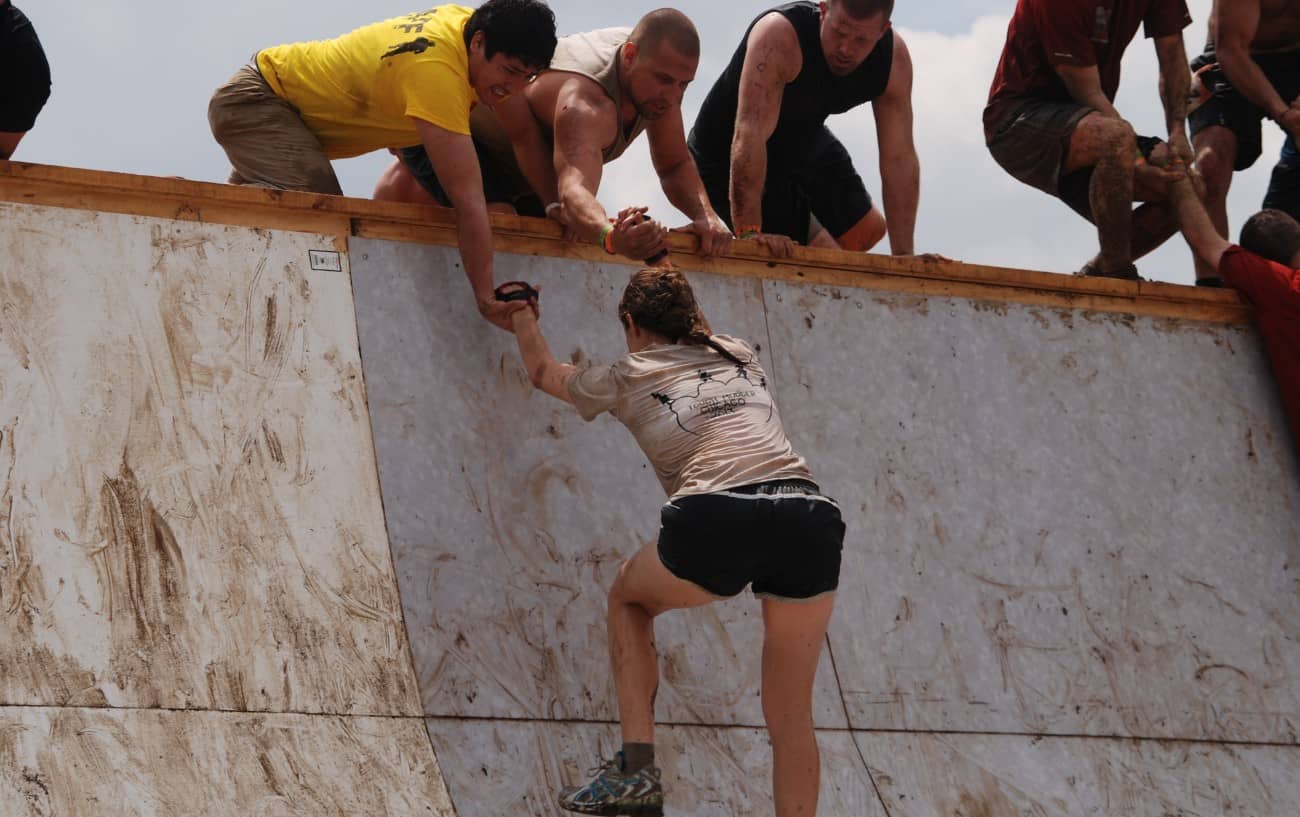
#67: PR
Running abbreviation for Personal Record. It refers to your fastest time for a specific distance or timed running event.
For example, if you’ve run three half marathons and your finish times were 1:43:19, 1:37:27, and 1:38:12, your marathon PR is 1:37:27.
#68: PB
A PB in running stands for Personal Best. It refers to the fastest time you’ve clocked for a certain race, distance, or run. PB is often used in the UK and Canada instead of PR.
#69: RICE
An acronym for Rest, Ice, Compression, Elevation — a common method to manage minor injuries or inflammation.
#70: VO2 Max
VO2 max refers to the maximum amount of oxygen your body can take in and use during exercise. It is a measure of your aerobic capacity.
Don’t worry about learning all these running terms at once; you have a lifetime to be a runner. Welcome to the club!
And speaking of terminology, we aren’t finished yet. Check out our following guide on running shoe terms you should know before buying your next pair, such as cushioning, upper, overpronation, and minimalist!


